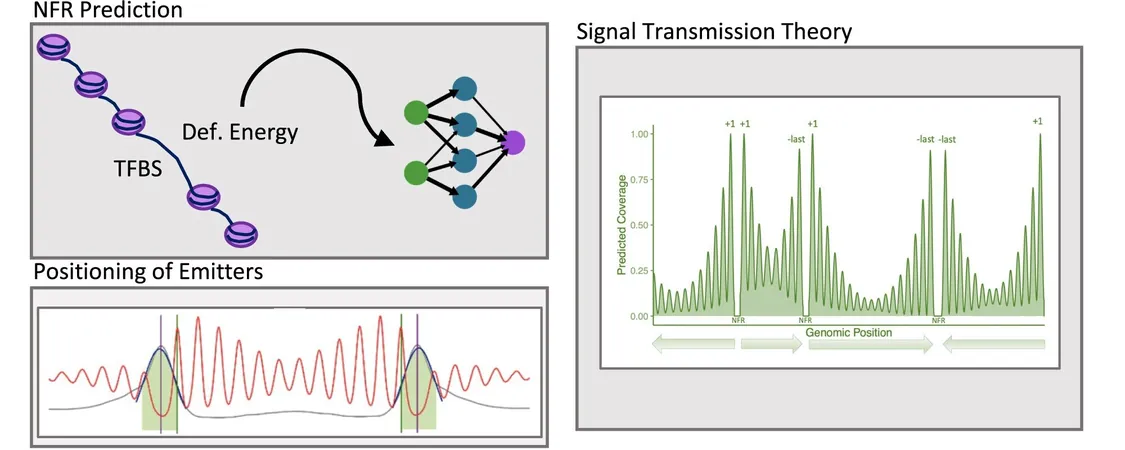
Breakthrough Model Revolutionizes Our Understanding of Gene Architecture through Nucleosome Positioning
2024-10-10
Author: Nur
In the intricate world of genetics, DNA serves as the blueprint of life, meticulously folded within cells to ensure optimal functionality. Central to this process are nucleosomes, which not only compact DNA but also play a pivotal role in the regulation of gene expression and various biological activities.
A groundbreaking advancement has emerged from a research team led by Dr. Modesto Orozco at IRB Barcelona. They have unveiled an innovative computational model that predicts gene architecture through the analysis of nucleosome positioning. This pioneering technique synergizes experimental methodologies with cutting-edge machine learning algorithms and principles of signal transmission. The findings are detailed in the journal *Nucleic Acids Research*, marking a significant milestone in genetic research.
A Predictive Model That Outshines Traditional Methods
Traditionally, researchers have relied on experimental strategies, such as MNase-seq, to delineate nucleosome locations. However, Dr. Orozco's model leverages DNA sequence data alongside physical characteristics to not only replicate experimental results but also to forecast nucleosome placements with unprecedented speed and accuracy.
“The precision of our model is on par with the most sophisticated experimental techniques available,” asserts Dr. Orozco, who heads the Molecular Modelling and Bioinformatics lab at IRB Barcelona and holds a professorship at the University of Barcelona.
Transforming Our Understanding of Gene Regulation and Medicine
This research has revealed that the architecture of nucleosomes is significantly shaped by the underlying DNA sequence and the physical signals emanating from gene ends. These signals play a crucial role in determining the locations of the initiating and terminating nucleosomes, thus influencing the arrangement of nucleosomes along the entire gene.
“Our findings imply that the structure of nucleosomes may affect gene expression in ways that we previously underestimated,” remarks Alba Sala, a Ph.D. student at IRB Barcelona and the lead author of the study.
This novel approach holds immense potential for future investigations into how modifications in chromatin structure can trigger the onset of various diseases. By unraveling the complexities of DNA organization and nucleosome positioning, researchers are poised to uncover new therapeutic targets and devise more effective treatments.
Why This Matters: The Future of Medicine and Genetics
As we continue to explore the intricate dance between DNA, nucleosomes, and gene expression, this groundbreaking model not only sets a new standard in genetic research but opens the door to revolutionary treatments in biomedicine. Imagine a world where understanding the very architecture of our genes could lead to cures for diseases that have long baffled scientists. The future of healthcare may very well depend on the insights gleaned from this advanced computational paradigm.





 Brasil (PT)
Brasil (PT)
 Canada (EN)
Canada (EN)
 Chile (ES)
Chile (ES)
 España (ES)
España (ES)
 France (FR)
France (FR)
 Hong Kong (EN)
Hong Kong (EN)
 Italia (IT)
Italia (IT)
 日本 (JA)
日本 (JA)
 Magyarország (HU)
Magyarország (HU)
 Norge (NO)
Norge (NO)
 Polska (PL)
Polska (PL)
 Schweiz (DE)
Schweiz (DE)
 Singapore (EN)
Singapore (EN)
 Sverige (SV)
Sverige (SV)
 Suomi (FI)
Suomi (FI)
 Türkiye (TR)
Türkiye (TR)